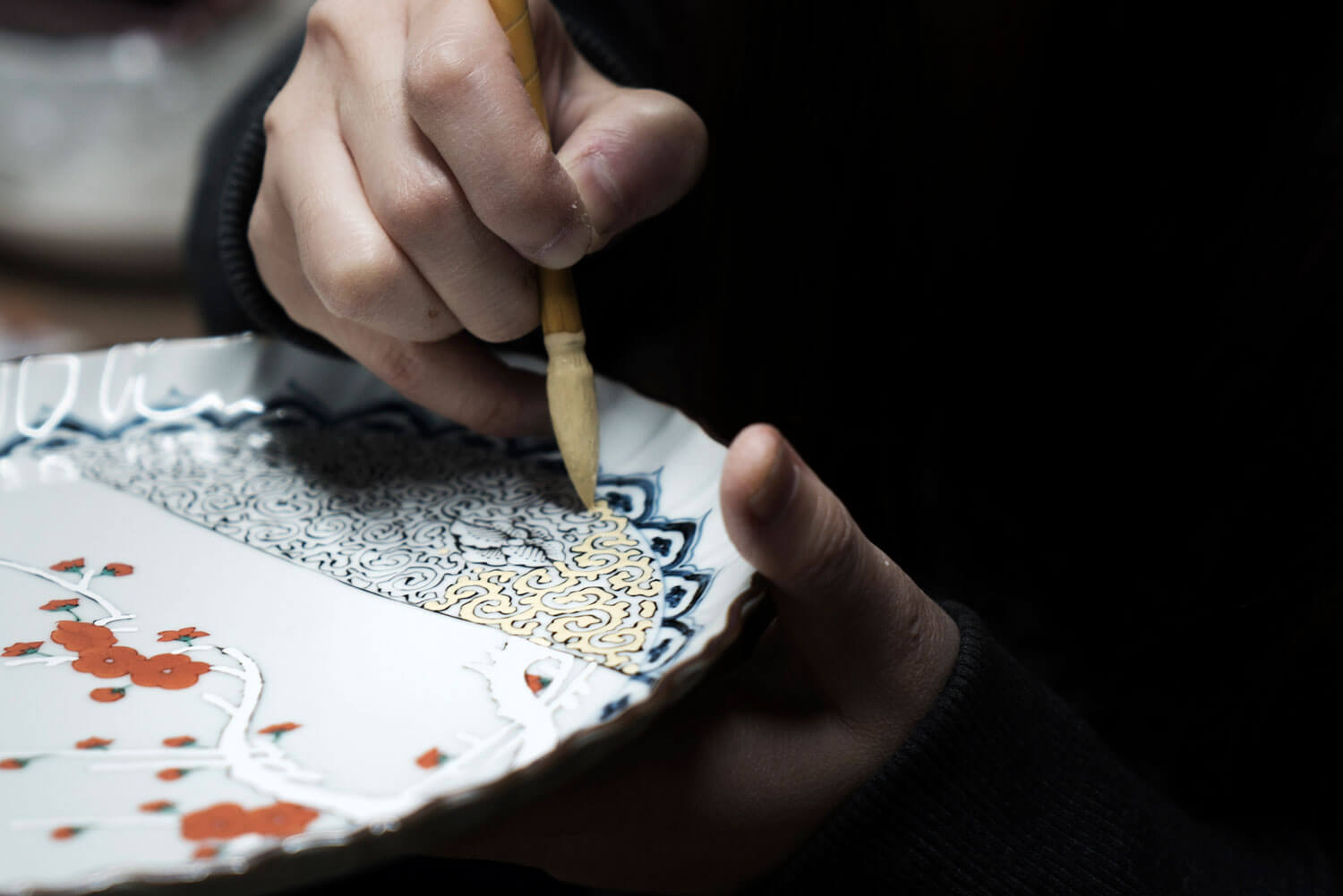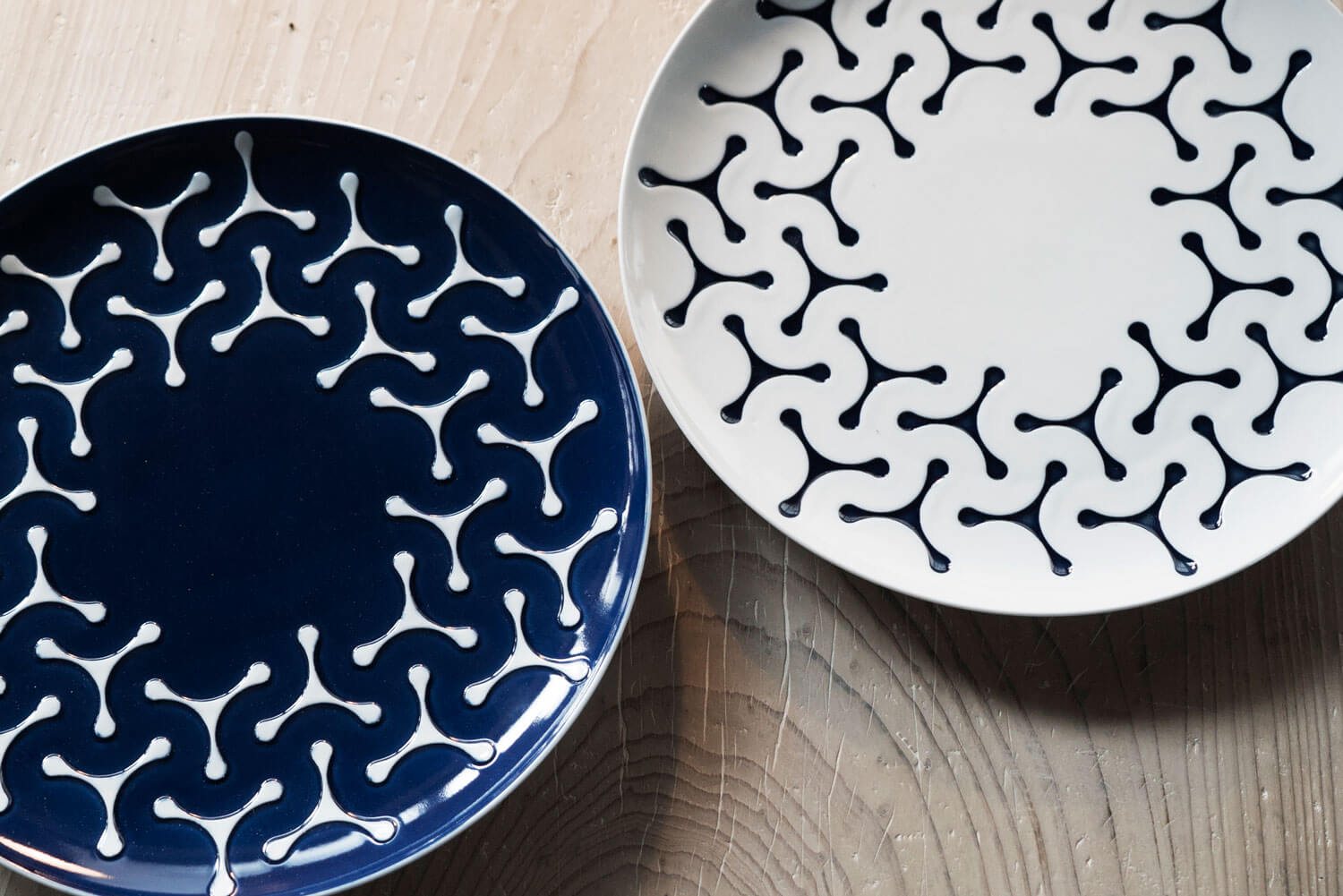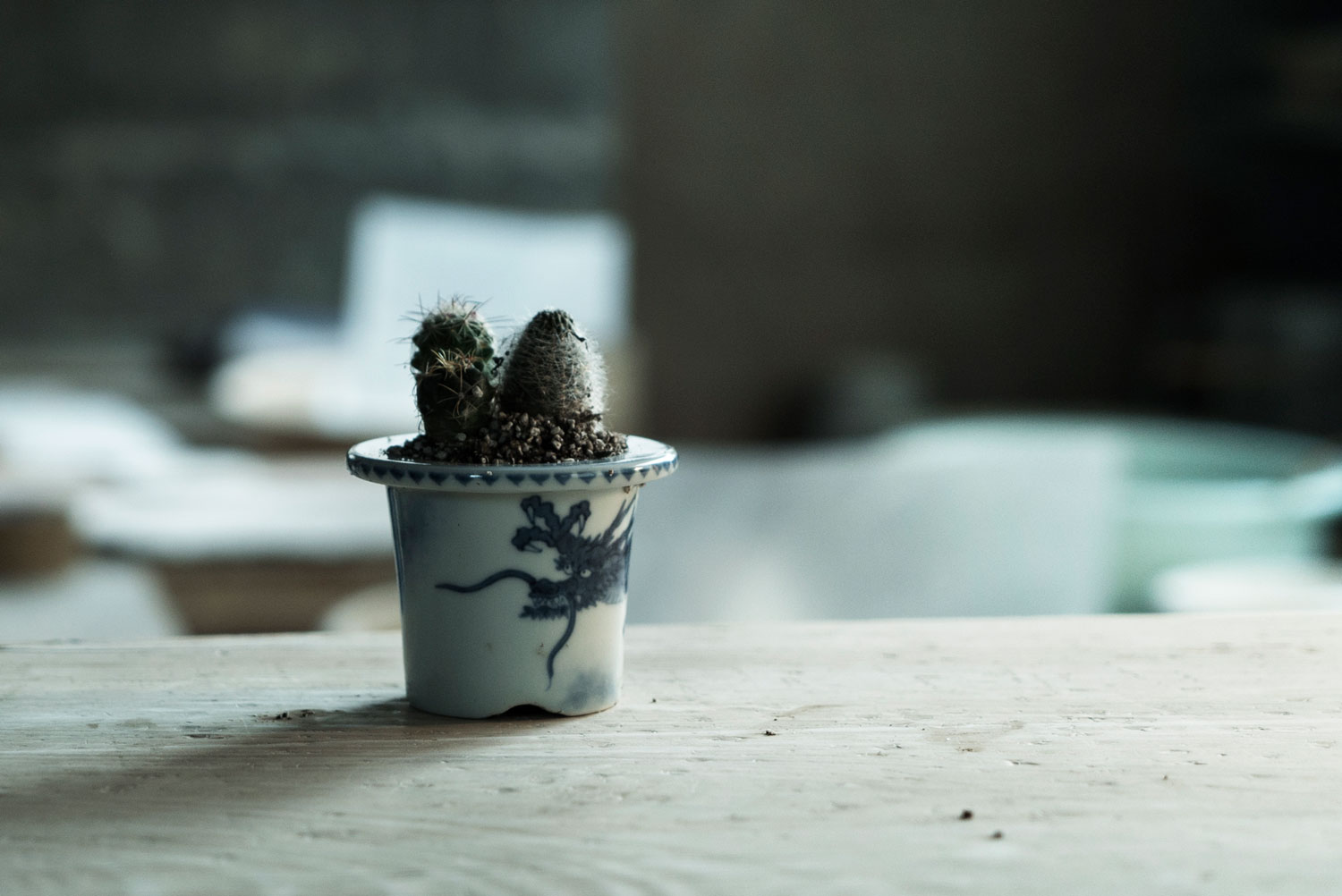The Ever-changing Arita-ware
Kyushu on the Table: Pairing Kyushu Specialties with French Cuisine #02
Saga Prefecture’s Arita is the birthplace of Japan’s porcelain tradition. It started in 1616 with Yi Sam-pyeong, a potter from Korea who’s still considered The God of Pottery. Japan’s unique aesthetic sense lended itself well to a rich ceramic culture, producing famous potteryware such as Imari-ware (or Arita-ware), which is renowned for its beauty and distinction around the world.

Craftsmen glaze following the strict standards that produce Riso Porcelain grade pottery. http://www.risogama.jp/about_riso_english.html
Riso Porcelain, Ltd. focuses on merging tradition with innovation. The company’s founder, Shinji Terauchi, acquired Yi Sam-pyoeng’s former home for Riso Porcelain. Terauchi is pioneering the future of Arita-ware with innovative designs. One example is a plate he collaborated with the Tokyo 2020 Olympic logo designer, Asao Tokoro. The piece brings Asao’s rich geometric designs together with Terauchi’s sublime craftsmanship. Whether one knows pottery or not, it’s hard not to appreciate this piece of art. With textured pieces such as this, colours have to be applied with care, then it has to be fired with equal care. The tension between the two artists’ work makes this a dignified piece that’s sophisticated enough for Japanese cuisine, and delicate enough for French.

The plate made in collaboration with the Tokyo 2020 Olympics logo designer, Asao Tokoro.
Reviewing the history of Japanese pottery, Terauchi expresses an interesting perspective, ‘Japan is a bowl culture. Since the Edo Period, bowls have had a place on the table as decorations holding potted plants. These were so small that they could fit in the palm of one’s hand. Therefore, they were used to garnish the table in much the same way a candle does’, says Terauchi. He has made several of these palm-sized pots using Arita-ware techniques. Terauchi feels strongly that innovation demands understanding and applying past traditions.

A palm-sized pot for house plants. A modern style that adds a decorative touch succulents.
TRENDING
-
The Tattoos that Marked the Criminals of the Edo Period
Traditional tattoos were strong signifiers; murderers had head tattoos, while theft might result in an arm tattoo.

-
Chiharu Shiota, Red Threads of the Soul
Last year, more than 660,000 people visited the retrospective 'Chiharu Shiota: The Soul Trembles' exhibit at the Mori Art Museum.

-
‘Before Doubting Others, Doubt Yourself. Who Can Truly Say a Dish Isn’t What It Used to Be?’
In ‘A Non-Conformist’s Guide to Surviving Society’, author Satoshi Ogawa shares his strategies for navigating everyday life.

-
The Story of Sada Yacco, the Geisha who Bewitched Europe
Described by Dazed magazine as the first beauty influencer, she has been restored to her former glory since 2019.

-
Ito Jakuchu's Naturalist Paintings
From 15 September until 14 October 2018, the Petit Palais showcased the artist's iconic ‘Images of the Colourful Realm of Living Beings’.





